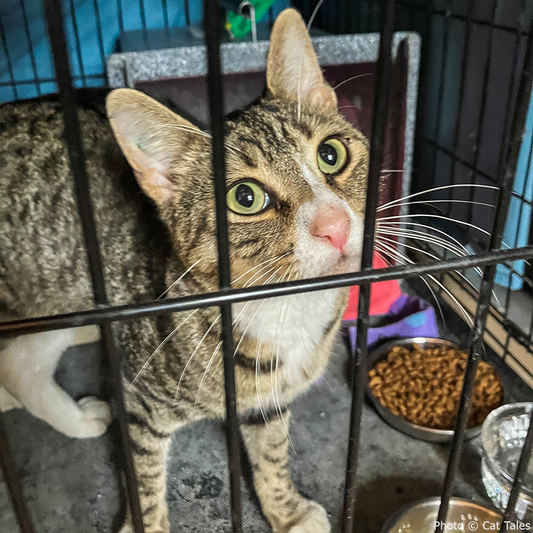Lawmakers Push to Save Endangered Species from Poisoned Prey in California
Matthew Russell
Photo: Pexels
California's wilderness, renowned for its diverse ecosystems and iconic species, faces a silent and deadly threat. The culprit? Rat poisons, specifically anticoagulant rodenticides, which have caused widespread harm to wildlife, pets, and even people.
Recent legislative efforts are striving to eliminate this danger, with growing momentum behind the push to ban the most toxic poisons from the state's ecosystems.

The Deadly Impact of Rodenticides
Rat poisons, known as rodenticides, are intended to control rodent populations but have proven lethal to many non-target species. These poisons work by preventing blood from clotting, causing animals to die slowly from internal bleeding. Unfortunately, predators like mountain lions, hawks, and owls that consume poisoned rodents become victims themselves. This process, known as secondary poisoning, has decimated predator populations and disrupted the natural balance of ecosystems across California.
A 2022 study by the California Department of Fish and Wildlife revealed alarming exposure rates among wildlife: over 88% of raptors, 80% of large game mammals, and 79% of non-game animals tested had been exposed to anticoagulant rodenticides, including both first and second generations of the poison. This exposure is particularly concerning for endangered species like the Swainson's hawk, San Joaquin kit fox, and northern spotted owl, all of which face heightened risks from these toxins reported by Courthouse News.

Legislative Action: The Poison-Free Wildlife Act
In response to the ongoing threat posed by rodenticides, California lawmakers have introduced Assembly Bill 2552, also known as the Poison-Free Wildlife Act. This bill aims to expand existing restrictions on rodenticides by adding two first-generation anticoagulant rodenticides, chlorophacinone and warfarin, to the state's list of banned substances. The bill, authored by Assemblymember Laura Friedman, is supported by a coalition of environmental and wildlife protection organizations, including the Center for Biological Diversity and Raptors Are The Solution (RATS) reported.
This legislation builds on previous efforts, such as the California Ecosystems Protection Act of 2020, which imposed a moratorium on second-generation anticoagulant rodenticides (SGARs). The 2023 expansion included the first-generation anticoagulant rodenticide diphacinone. Despite these measures, significant exposure to rodenticides continues, underscoring the need for further action to protect California's wildlife.
The bill also introduces a groundbreaking provision allowing community members to pursue legal action against the illegal use and sale of rodenticides. This could empower citizens to hold violators accountable and help reduce the enforcement burden on state and local officials, according to the Animal Legal Defense Fund.

Advocacy and Public Health
The push for stricter rodenticide regulations has garnered widespread support from environmental groups and concerned citizens. Advocates argue that the use of these poisons is not only cruel but also unnecessary, given the availability of safer and more effective alternatives. Methods such as exclusion, sanitation, fertility control, and trapping can manage rodent populations without harming other wildlife or endangering public health.
“It’s unacceptable that California’s raptors, bobcats, and mountain lions are bleeding out from the inside because of indiscriminate use of these poisons. We can do better as a society, and this bill is an important step toward a poison-free future,” said J.P. Rose, Urban Wildlands policy director at the Center for Biological Diversity.
The human toll of rodenticides is equally concerning. The American Association of Poison Control Centers reported more than 3,000 cases of rodenticide poisoning in 2022, with over 2,200 involving children under six years old. Pets are also at risk, with countless cases of dogs and cats falling victim to these dangerous substances. The continued use of rodenticides thus poses a serious threat not only to wildlife but also to the health and safety of California's residents.

A Safer Future for California's Wildlife
As California moves closer to a final vote on the Poison-Free Wildlife Act, the debate over rodenticides highlights a broader conflict between public health and environmental protection. While some argue that rodenticides are necessary for controlling pests in certain situations, others point to the devastating consequences for wildlife and the availability of safer alternatives.
The outcome of this legislative battle will have far-reaching implications for California's ecosystems. If successful, the Poison-Free Wildlife Act could serve as a model for other states grappling with the environmental and public health impacts of rodenticides. For now, the fate of many of California's most beloved species hangs in the balance, as lawmakers, environmentalists, and citizens work together to protect the state's natural heritage.
Click below to take action for a poison-free environment!
Matthew Russell is a West Michigan native and with a background in journalism, data analysis, cartography and design thinking. He likes to learn new things and solve old problems whenever possible, and enjoys bicycling, spending time with his daughters, and coffee.




















